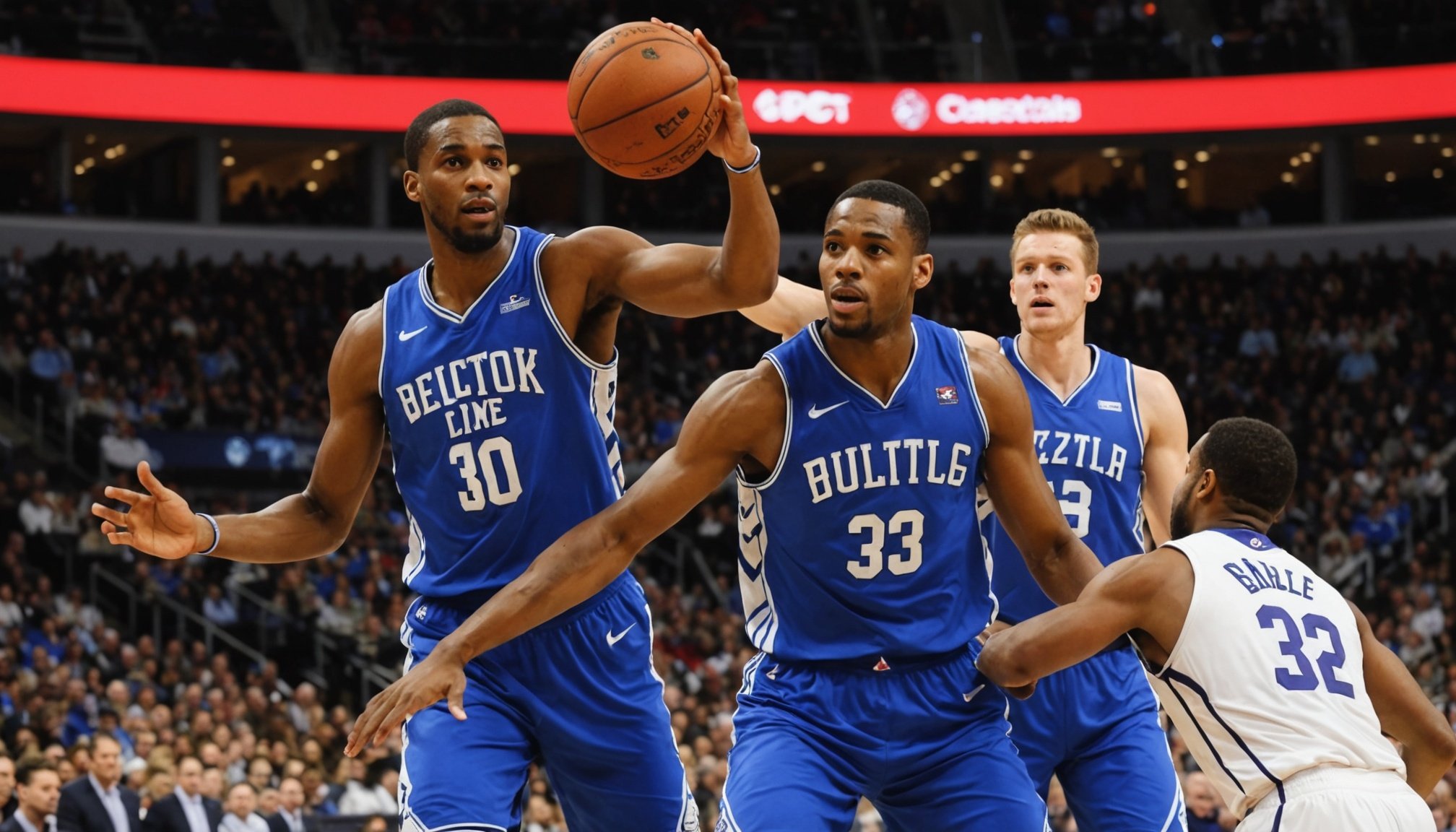Understanding Decision-Making in Basketball
Decision-making in basketball is crucial, especially during high-pressure game situations. Players are often required to make split-second choices that can impact the outcome of the game. The ability to do so efficiently is not just about physical prowess; it hinges on a complex interplay of factors.
The psychological aspects greatly influence these game-time choices. Confidence and mental resilience play significant roles, as players must trust their instincts while managing stress. Cognitive load, or the amount of mental effort used in the decision-making process, can vary based on factors such as previous experiences and familiarity with similar scenarios.
Also read : Mastering the game: proven strategies for uk basketball players to boost hand-eye coordination in shooting
Game intelligence is integral to player performance on the court. It’s not merely about reacting quickly but understanding the game in depth. Players with high game intelligence can anticipate opponents’ moves, adjust their strategies, and exploit weaknesses. This understanding enhances their ability to contribute effectively under various circumstances.
Moreover, decision-making is often refined through consistent practice and learning. Coaches aim to cultivate this skill by exposing players to diverse situations, encouraging quick thinking and adaptability. By understanding the underlying components of decision-making in basketball, players can improve their overall performance and potentially influence the game’s direction.
Additional reading : Elevate your game: the ultimate uk basketball players” guide to boosting cardiovascular fitness with interval training
Essential Strategies for Enhancing Decision-Making Skills
In the dynamic realm of basketball, strategies for decision-making are paramount in refining a player’s game-time effectiveness. Clear, well-practiced coaching tactics and purposeful tactical drills bridge the gap between preparation and performance, enhancing both confidence and game intelligence.
Tactical Drills for Real-Game Scenarios
Designing drills that mimic real-game pressure moments is a cornerstone practice. These drills simulate high-stakes environments, ensuring players face situational challenges within practice. For example, incorporating time constraints can teach players to execute quick decision-making effectively. Evaluating player responses under these simulated conditions fosters adaptability and sharpens instinctive reactions.
Developing Game IQ Through Analysis
Video analysis is an invaluable tool for improving situational awareness. By reviewing game footage, players can learn to discern patterns in opposing defenses, thereby making faster and more informed decisions. Teaching athletes to read the game effectively can transform insights into critical actions on the court. Furthermore, post-game feedback sessions offer personalized skill enhancement, nurturing deeper understanding and execution.
Mental Conditioning Techniques
Mental conditioning heralds significant benefits. Incorporating mindfulness practices within training can elevate focus and performance consistency. Visualization empowers players to rehearse optimal responses to game scenarios mentally. Additionally, instilling a game plan mindset cultivates a strategic approach, alleviating anxiety during critical plays, ultimately refining decision-making under pressure.
Case Studies and Real-World Applications
In the world of basketball, analysing case studies offers valuable insights into decision-making during intense game situations. Consider the example of professional basketball players renowned for their split-second decision-making abilities. Players like LeBron James or Stephen Curry showcase how high game intelligence and quick thinking significantly boost their performance on the court. Their ability to read the game, understand opponents, and adapt strategies sets them apart, providing a blueprint for aspiring athletes.
UK basketball teams have implemented innovative strategies to refine decision-making skills. For instance, the Leicester Riders focus on analytical reviews and strategic drills to improve player effectiveness. These case studies highlight how structured practice and game intelligence lead to enhanced performance, offering lessons that teams globally can emulate.
Conversely, there are lessons to be learned from failures in decision-making. Examining crucial moments where poor decisions led to losses can guide future strategies. For example, analysing a specific playoff game loss due to a missed timeout call can inform better communication and strategy planning. Such reflections not only offer learning opportunities but also encourage the implementation of strategies that bolster decision-making under pressure.
Expert Opinions and Insights
Understanding the psychology in sports is key to enhancing decision-making in basketball. Insights from experts provide valuable perspectives, enriching our knowledge base. Coaching insights reveal how tailoring strategies to individual players can uplift player performance. Coaches often emphasize game-specific scenarios, aiding players in discerning real-time options.
Interviews with Coaches and Sports Psychologists
Basketball coaches underscore the need for adaptable decision-making. Through interviews, they share how mental resilience and strategic stress management bolster game-time choices. Sports psychologists contribute by highlighting techniques such as mindfulness and cognitive focus exercises, helping athletes maintain clarity under pressure. They stress that confidence and instinct often distinguish great players.
Comparative Analysis of Decision-Making in Other Sports
Drawing parallels from other sports like American football reveals shared strategies. Both sports necessitate rapid decision-making under stress, emphasizing pre-emptive strategies. American football, for instance, uses strategic plays that parallel tactical movements in basketball. Such cross-disciplinary insights benefit athletes, illustrating how varied approaches can refine and enhance decision-making in basketball. Exploring these perspectives paints a comprehensive picture of decision-making dynamics, encouraging continuous development and strategic implementation.
Measuring Improvement in Decision-Making Skills
Improving decision-making in basketball hinges on setting clear, measurable goals to track progress effectively. Establishing performance metrics allows both players and coaches to objectively evaluate skill enhancements and areas needing attention.
Analytics play a crucial role in performance evaluation. By utilising data, teams can obtain insights into a player’s game-time choices, such as shot selection and pass accuracy. Monitoring these patterns provides quantifiable evidence of decision-making evolution over time.
Evaluating player performance through consistent tracking and analysis uncovers the effectiveness of various strategies for decision-making. Coaches can compare data before and after implementing specific tactics, providing tangible evidence of improvements. This systematic approach ensures players receive targeted feedback, encouraging rapid development.
To further gauge the impact of decision-making skills on game results, video analysis proves indispensable. It offers a nuanced view of player performance during high-pressure moments, highlighting areas for refinement. By combining traditional observation with technological measures, teams can perfect their pursuit of competitive excellence.
Ultimately, leveraging these tools places players in a better position to adapt and excel, fostering a continuous cycle of improvement that is both observable and measurable. This strategic framework for assessing decision-making prowess emphasises tangible growth, ultimately enhancing overall performance on the court.
















